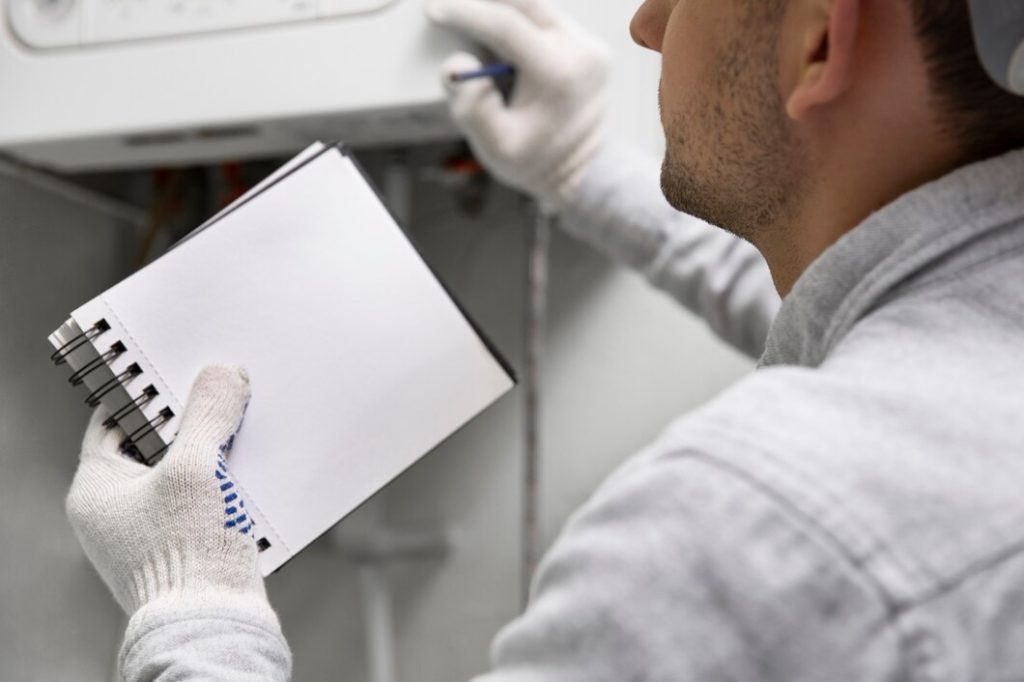Breathing Easy: Strategies For Enhancing Indoor Air Quality In Your Home

Ensuring clean and healthy indoor air is essential for maintaining a comfortable and safe home environment.
There are several strategies homeowners can implement to enhance indoor air quality and promote better respiratory health for themselves and their families.
First, regular cleaning and dusting of surfaces, furniture, and floors can help remove allergens, dust mites, and other pollutants that accumulate over time.
Investing in high-quality air filters for HVAC systems can also trap airborne particles and prevent them from circulating throughout the home. Proper ventilation, such as opening windows and using exhaust fans, is crucial for promoting air circulation and reducing indoor pollutant levels.
Finally, minimizing chemical-based household cleaners and opting for natural, eco-friendly alternatives can improve indoor air quality and create a healthier living environment for all occupants. By implementing these strategies, homeowners can breathe easy knowing that they are taking proactive steps to enhance the air quality in their homes.
Introduction to Indoor Air Quality
The sanctuary we call home is often where we feel safest, yet it can also be where air quality may compromise our health. Indoor air quality (IAQ) measures the healthfulness of air inside buildings and dwellings. It considers various pollutants and their potential impact on human health.
People spend much time indoors, so understanding and maintaining good IAQ is paramount to preventing adverse health effects. When assessing air quality, various factors include ventilation, pollutants from household goods or construction materials, and even climate influences.
Efforts to maintain or enhance IAQ, like those by professionals from services such as Ideal Residential HVAC service, can significantly bolster the comfort and well-being of residents.
Identifying Sources of Air Pollution Indoors

Pinpointing the origins of indoor pollution is the first step toward cleaner air.
Common culprits encompass:
- Igniting sources like gas, kerosene, oil, wood, tobacco, and coal things.
- Develop furnishings and materials that should be diverse, just like deteriorated asbestos, consisting of insulation.
- Moist carpet; and ca.
- Cabinetryiture consisting of a few pressed wood products.
Other significant sources are cleaning and maintenance products inside the house, personal care, or hobbies. Also, outdoor sources might include pesticides, air pollution, and radon, which can enter and accumulate indoors.
To adequately address these various pollutants, one must first recognize and understand their presence and behavior within their home environment.
Health Effects of Indoor Pollutants
Indoor pollutants can exert immediate and long-term health effects. Short-term symptoms reminiscent of a cold or other viral diseases, such as irritation of the eyes, nose, and throat, headaches, dizziness, and fatigue, can often be traced back to poor indoor air. The risk increases with the concentration of pollutants and length of exposure.
Long-term exposure to poor IAQ can lead to more severe health conditions like respiratory diseases, heart disease, and cancer. The World Health Organization (WHO) recognizes indoor air pollution as a significant cause of morbidity and mortality worldwide. Mainly at risk are individuals with pre-existing health conditions, the elderly, and children. Ensuring the indoor environment is as clean as possible can mitigate these risks substantially.
Some Immediate Effects That Might Be Observed
A few health effects might indicate that even a single exposure to a pollutant might cause essential harm. Symptoms might include irritation around the nose and eyes, dizziness, fatigue, and headaches. Immediate effects are both treatable and short-term. But if things elevate, you might need medical help.
A few immediate effects are similar to viral diseases like colds, and it’s difficult to check whether these symptoms are similar to indoor air pollution. A few individuals might be sensitive to chemical or biological pollutants, which is why they must be kept safe from such pollutants.
Strategies to Improve Indoor Air Quality
Improving IAQ involves:
- Controlling the source of pollution.
- Improving outdoor air ventilation.
- Using air cleaners as needed.
Enhanced ventilation can significantly improve IAQ by diluting and removing pollutants from indoor spaces. A well-ventilated home can minimize indoor air contaminants by ushering out stale air and bringing in fresh, clean air. For instance, opening windows and doors enables natural ventilation when weather and safety permits.
Additional mechanical means such as fans and vent systems can also be helpful, particularly in kitchens and bathrooms where pollutants often originate. Some offer valuable insights into how improved ventilation affects IAQ, advocating for better airflow as a critical component of a healthy home.
Professional Air Quality Assessment and Improvement Services

There are instances when the aid of an IAQ professional is indispensable, such as when specific health symptoms are persistent or when there is a lack of clarity on of the home’s air quality. Professionals in this field utilize sophisticated assessment tools to diagnose IAQ problems and develop targeted solutions
Whether it’s identifying mold issues, checking for radon, or assessing the performance of an HVAC system, professional assessments can provide the catalyst for significant improvements in-home air quality.
To improve indoor air quality, consider investing in air filtration in Fort Worth, which can effectively remove airborne pollutants and allergens, ensuring a healthier living environment for you and your family.
Maintaining Air Quality in Different Seasons
Every season brings its own set of IAQ challenges, from pollen infiltration in the spring to the need for dehumidification in summer and increased use of heating systems in the winter. Adapting IAQ strategies to address each season’s specific challenges is vital.
For instance, maintaining a balance between humidity and dryness indoors can help prevent issues from mold growth to static electricity and respiratory discomfort. Being proactive in adjusting IAQ tactics according to the season can profoundly impact the air quality at home throughout the year.
Conclusion and Best Practices
Maintaining good IAQ is a multifaceted endeavor that requires consistent attention and proactive measures. Homeowners can significantly improve their living environment by understanding pollution sources, utilizing measurement tools, incorporating nature’s solutions like plants, and staying abreast of technological advancements.
Keeping abreast of best practices for managing IAQ and engaging with professionals for audits and advice can lead to substantial improvements when necessary.
Ultimately, the air within our homes is as essential to our well-being as the food and water we eat. By giving it the attention it deserves, we can breathe easier, knowing we’re providing the best possible atmosphere for ourselves and our loved ones.
Read Also:











Leave A Reply